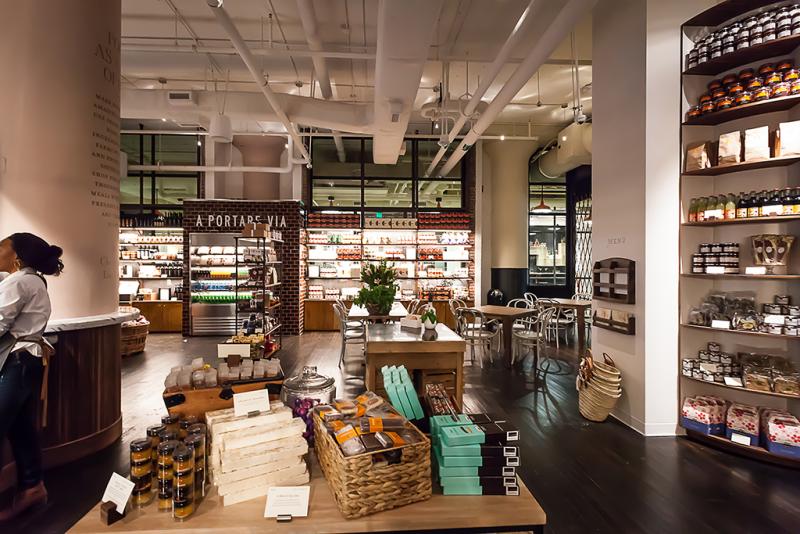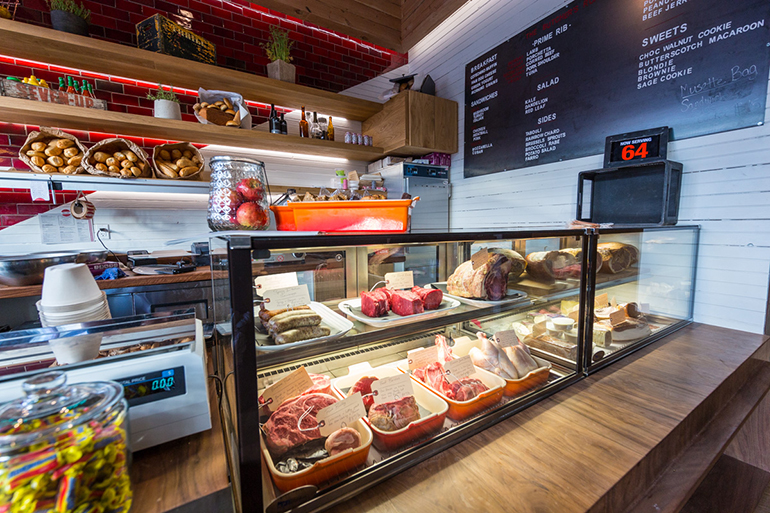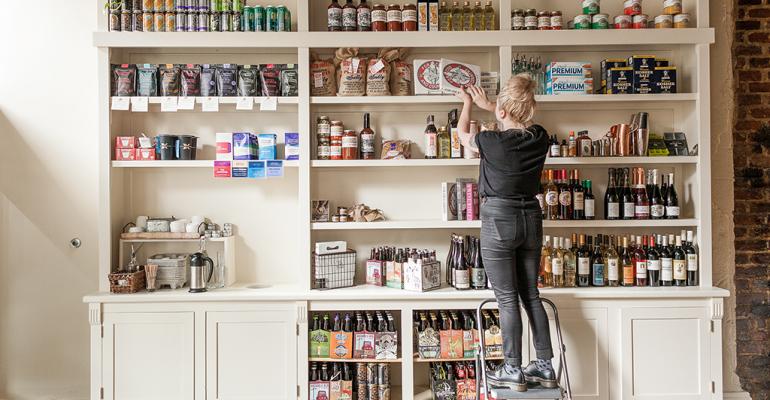By now you’ve probably noticed the growing number of restaurant-retail hybrids. Grocers are expanding their carryout offerings and even offering more dine-in options. At the other end of the spectrum, traditional restaurants are discovering the profit potential of retail.
Ryan Croxton, co-owner of Rappahannock Oyster Company restaurant and the Rapp Session Oyster Bar in Richmond, VA, recently opened an attached market selling ingredients used by the restaurant’s own kitchen. “We knew we wanted to offer our oysters for retail, but it never quite felt natural handing over hundred-count bags of oysters at the hostess stand,” notes Croxton.
“When a space became available next door, we just took that idea and stretched it a bit to include our entire kitchen…We buy lots of great food from amazing people, most of whom don’t have retail outlets. It just made sense to make the market our pantry and basically put our pantry up for sale,” he explains. “We pull from it just like consumers do. That way everything stays super fresh.”
In addition to allowing guests to bring home a taste of their favorite restaurants, a store makes economic sense, Croxton adds. The retail component helps Rappahannock Oyster Company “to build up our buying power, which helps the restaurant’s bottom line and passes that saving through to our retail arm. Since our market is the restaurant’s pantry, we’re guaranteed to sell out.”
Oysters and clams are top sellers, followed by “local beer (we offer build-your-own six-packs), wine, bitters, and Counter Culture coffee,” says Croxton, as well as “housemade pickles, local fish, bluefish dip, [and] locally milled heirloom grains.”
At San Francisco's Salumeria, cheeses and meats are offered for sale in a deli area. Additionally, retail products, including oils, honey and jarred sauces, line the walls of the charming and intimate dining room.
In Chicago, Debbie Sharpe, owner of Goddess & Grocer, says, "The market component is more of a service to customers looking for last-minute items to entertain. Items like cheeses and relish, salamis, mustards, gourmet nuts and chocolates do very well. It also allows us to highlight and support local producers and chefs.”
Imports, seafood and butcher shops
(Continued from page 1)
At Atlanta’s high-profile, recently opened Ponce City Market, Bellina Alimentari bills itself as “a unique Kitchen, Bar, Market and Culinary Club,” offering regular cooking classes.

The 4,000-square-foot space evokes the cafes and small shops of Northern Italy. With only 14 bar seats, Bellina Alimentari is more store than restaurant. Bellina’s “The Market” sells fresh pastas, imported grocery items and locally sourced, proprietary Bellina Alimentari meats and cheeses.
At L.A.’s The Cannibal (the original is in New York), a butcher shop sits adjacent to the meat and beer-centric restaurant. It features cases of cured meats and house-made sausages and charcuterie from Executive Chef Francis Derby. There’s also a daily sandwich counter.
The butcher shop aims to capture the experience of East Coast and European delis, where guests grab a sandwich for lunch and pick up everything they need for dinner that evening, say owners Christian Pappanicholas and Cory Lane, who add that they wanted to resurrect the interactive service between guest and butcher that’s been lost in the era of the supermarket chain.

Also in L.A., at chef Michael Cimarusti’s newly opened seafood shop, Cape Seafood and Provisions, guests can purchase freshly caught seafood, pantry items and house-made prepared foods such as smoked fish and lobster bisque. In addition to evoking the nostalgia of a New England fish market, Cape Seafood seeks to educate guests about sustainable seafood practices (a passion of Cimarusti’s) and provide a “responsible, traceable shopping experience.” Cimarusti says while the profit margins are lower on market items, the labor costs are much lower as well.
As for best-sellers, Cimarusti says, "there are days where the prepared food sales (such as lobster rolls and tuna melts) are equal to the fresh fish sales, which came as a surprise to us."
All of this begs the question: What would your guests bring home from your restaurant if they could? It might be worth carving out a niche in your operation for profitable retail items.
Contact Gina LaVecchia Ragone: [email protected]
Follow her on Twitter: @RagoneGina





